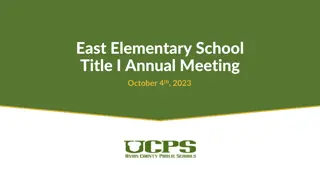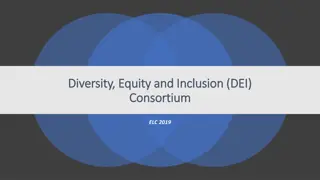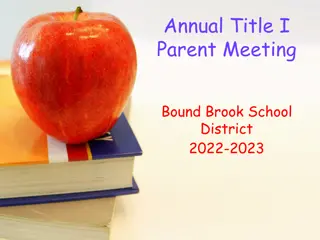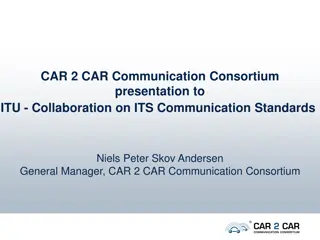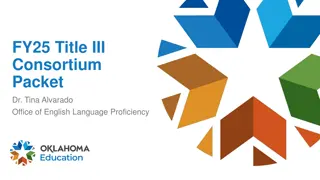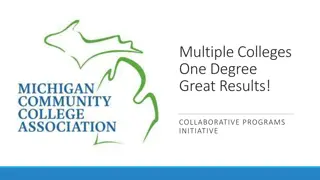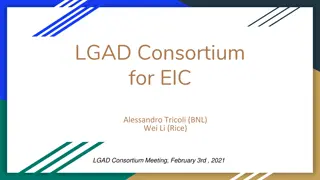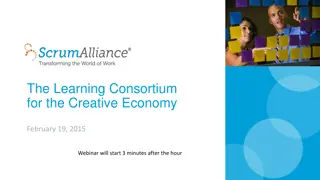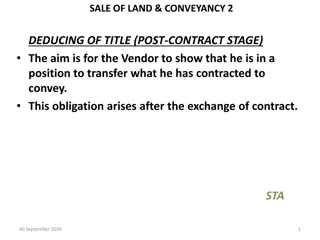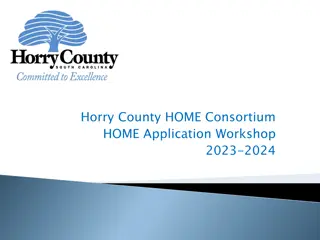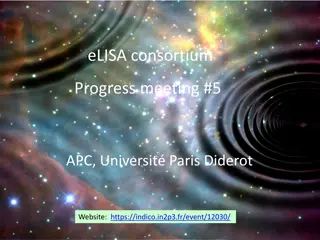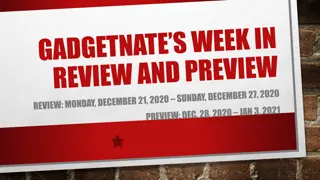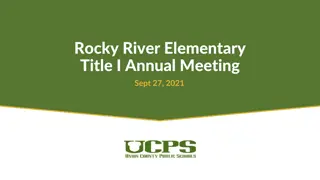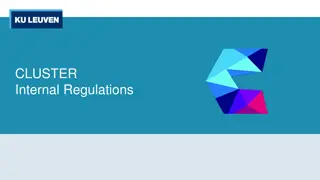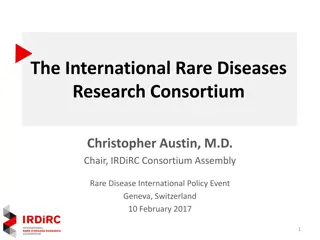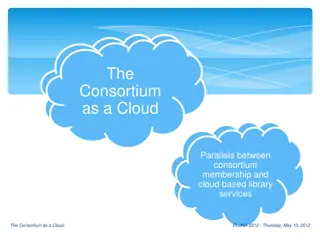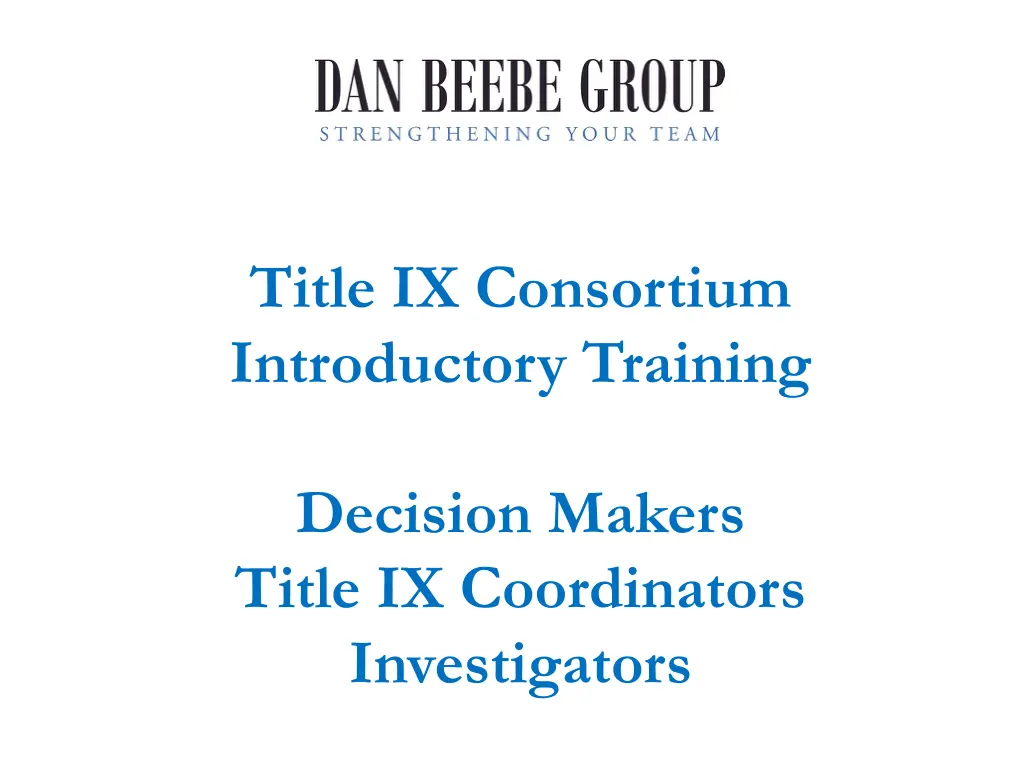
Understanding Title IX: Regulations, Training, and Policies
Explore the fundamentals of Title IX, from its historical background to the current Final Rule, covering key aspects like defining sexual harassment, required training, policy adoption, and more for decision makers, coordinators, and investigators.
Download Presentation

Please find below an Image/Link to download the presentation.
The content on the website is provided AS IS for your information and personal use only. It may not be sold, licensed, or shared on other websites without obtaining consent from the author. If you encounter any issues during the download, it is possible that the publisher has removed the file from their server.
You are allowed to download the files provided on this website for personal or commercial use, subject to the condition that they are used lawfully. All files are the property of their respective owners.
The content on the website is provided AS IS for your information and personal use only. It may not be sold, licensed, or shared on other websites without obtaining consent from the author.
E N D
Presentation Transcript
Title IX Consortium Introductory Training Decision Makers Title IX Coordinators Investigators
Title IX Code of Federal Regulation is 34 CFR 106.30: No person in the United States shall, on the basis of sex, be excluded from participation in, be denied the benefits of, or discrimination under any educational program or activity receiving federal financial assistance. be subjected to
Quick History Law passed in 1972 and was primarily applied to Gender Equity In the 1980s and 1990s courts began to apply law to address sexual misconduct Various guidelines were promulgated, such as 2011 Dear Colleague Letter New Final Rule issued in May 2020 different from Guidelines Pressure to change again?
Purpose of Todays Session All in it together Heighten awareness of Final Rule Policies, especially regarding response Definition of sexual harassment Response obligations Required training Information dissemination Identify those involved at your District: Decision makers, Title IX Coordinator and others who may be responsible (investigators?) Stop gap plan and strategy going forward
Elements of Final Rule New sexual harassment definition New requirements for responding to Title IX defined sexual harassment Emphasis on supportive measures Formal complaint required for investigations or informal resolution More prescriptive due process provisions Training Separation of roles Publicize Title IX Coordinator
Policies Must adopt and publish Grievance Procedures Prompt and equitable resolution of complaints A specific process for formal complaints, including how to file formal complaints Must identify Title IX Coordinator who is responsible for coordinating response to sexual harassment
New Final Rule Training Requirements Specific topics apply for Decision Makers (Superintendents?) Title IX Coordinators Investigators Any person who facilitates informal resolution process All employees not mandated but recommended (met by other training?)
Specific Training Topics Sexual harassment definition Scope of education program and activity How to Conduct an Investigation Grievance Process How to serve impartially, including avoiding pre- judgment, conflicts of interest and bias Relevance of questions and evidence Investigators: Issues of relevance to create report that fairly summarizes the evidence
Definition of Sexual Harassment Quid pro quo (this for that), or Unwelcome conduct that a reasonable person would find so severe, pervasive and objectively offensive that denies a person equal access to school s educational program or activity, or Sexual assault (rape, dating violence, domestic violence, stalking)
Education Program or Activity For Title IX application, sexual harassment must have occurred during educational program or activity Includes locations, events or circumstances over which school exercises substantial control over both Respondent and context in which the sexual harassment occurs Emphasis with pandemic is that it also incudes digital platforms If not applicable to Title IX, state or district policies may apply
Actual Knowledge For K-12: When any employee learns of sexual harassment or allegations of sexual harassment Change from responsible employee standard Also change from known or should have known standard Report can be oral, anonymous, in writing, from media, third-parties, social media, etc. Educate others to contact Title IX Coordinator immediately and not to dismiss or process on own
Response to Actual Knowledge Upon employee gaining actual knowledge a school must: Respond promptly In a manner that is not deliberately indifferent (clearly unreasonable in light of known circumstances) Title IX coordinator must contact Complainant confidentially to discuss supportive measures and explain the process for filing a formal complaint Either Complainant or Title IX Coordinator can file formal complaint, but not required
Formal Complaint Required for either investigation or informal resolution process May be filed in person, by mail or by email with signature and identity requirements met Title IX Coordinator may sign formal complaint under limited circumstances such as allegations of violence, threats, use of weapons, and serial predation Very specific definition in Final Rule Must allege Title IX defined sexual harassment At time of filing, Complainant must have participated in or attempted to participate in educational program or activity Identity of Respondent need not be known at time
Further Response Requirements Provide free supportive measures Investigate according to Grievance Procedures if formal complaint is filed Must use trained Title IX personnel to objectively evaluate all relevant evidence Investigation must be thorough, prompt and impartial Standard of evidence used to determine responsibility? CBA Standards? Cannot offer informal resolution if complaint involves employee harassing student
Supportive Measures A primary focus of Final Rule which is offered regardless of whether formal complaint is filed Provided equitably to Complainant and Respondent Non-disciplinary, non-punitive services Examples: counseling, course-related adjustments, restrictions on contacts, increased security and monitoring Confidential in most cases, unless both parties need to be aware to comply
Parental Rights Final Rule provides existing legal rights of parents and guardians are not diminished by Title IX Parent or guardian must be permitted to exercise rights granted to the party (Complainant and Respondent) whether requesting supportive measures or participating in grievance process Must be allowed to accompany student to meetings, interviews and hearings Student s advisor of choice may be different Parent or guardian must be able to review and inspect evidence
Information Dissemination Final Rule requires certain information be posted on website prominently Students, employees, parents/guardians must be notified: Title IX coordinator s contact information Name or title (title preferred as people change) Office address, email and telephone number school does not discriminate on the basis of sex and that Title IX does not allow it Reports of violations can be made at any time Post training materials
Other Factors If Title IX isn t applicable, Washington State requirements still may require actions per OSPI Bulletin Washington law is not as proscriptive for response Known or should have known versus actual knowledge Preponderance of evidence standard OSPI: Title IX Coordinator now must be different than superintendent, who is decision maker under Washington rules Do other District policies apply?
Coming Up Stop gap plan Model policies and procedures, including detailed Grievance Policy Detailed training regarding investigations and processing of complaints Check lists for response obligations, e.g., supportive measures, formal complaints, stages of investigations and adjudication Other?

